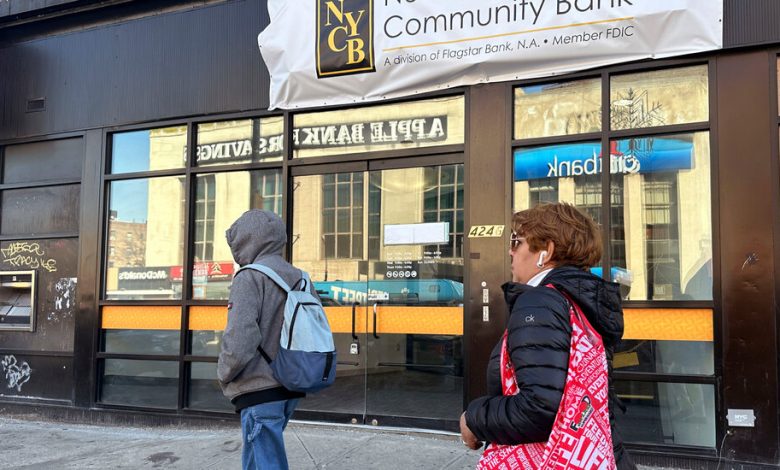New York Community Bank Reports $2.4 Billion More in Losses as C.E.O. Resigns

New York Community Bank, the lender teetering under mounting real-estate-related losses, shared several pieces of fresh bad news on Thursday: Its fourth-quarter losses were $2.4 billion worse than it had earlier stated; its chief executive and an allied board member are out; and the bank has identified what it called “material weaknesses in internal controls.”
The all-at-once disclosures, released in securities filings late Thursday, were an uneasy reminder of the price the bank is paying for a breakneck expansion strategy that included acquiring an ailing rival less than one year ago. They sent the bank’s already pressured shares into another nosedive, down more than 20 percent in after-hours trading. The stock had already fallen 54 percent this year.
The ugly developments were the last thing NYCB needed after weeks of trying to assuage investors’ concerns about its financial health. For weeks, questions have swirled about the depth of its losses in investments and loans tied to both office and apartment buildings — an area of concern for banks in general, but one in which NYCB has particular concentration.
Despite its name, the bank has a national presence, partly because of its acquisition of much of Signature Bank, which collapsed during last year’s banking crisis. Based on Long Island, NYCB operates more than 400 branches under brands including Flagstar Bank across the Midwest and elsewhere. Flagstar is one of the nation’s largest residential mortgage servicers, making the bank particularly at risk to any weakness in the housing market in an era of persistently elevated interest rates.
In January, NYCB shocked investors and its peers when it unexpectedly posted a $252 million loss for the fourth quarter, slashed its dividend and set aside a significant amount of reserves to cover any future losses. NYCB’s disclosures on Thursday mean it took an additional impairment of $2.4 billion for the fourth quarter.
The bank’s troubles are resurfacing fears from a year ago about how small lenders have been weathering the sharp rise in interest rates since March 2022, though NYCB’s disclosure last month didn’t set off a widespread sell-off.
